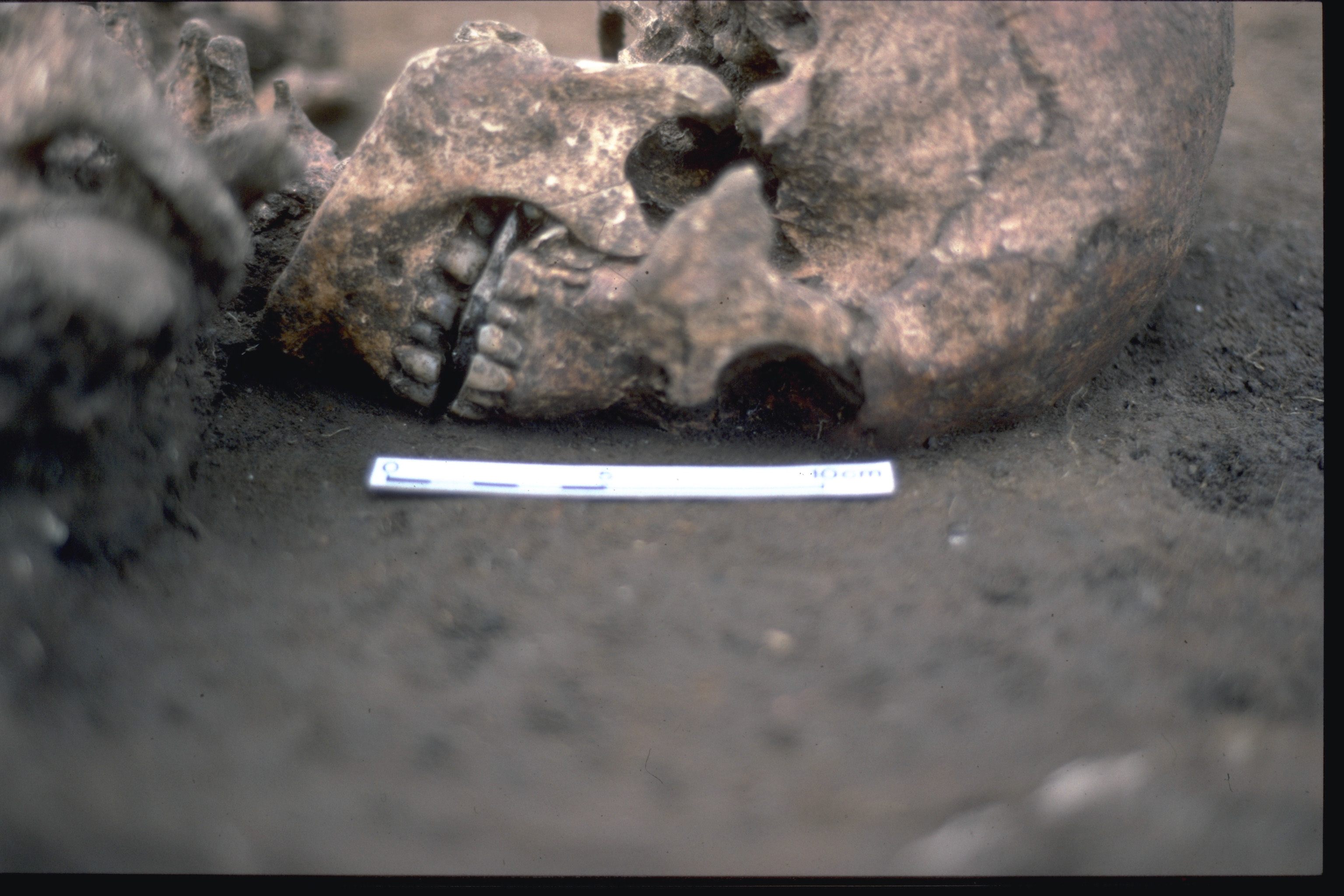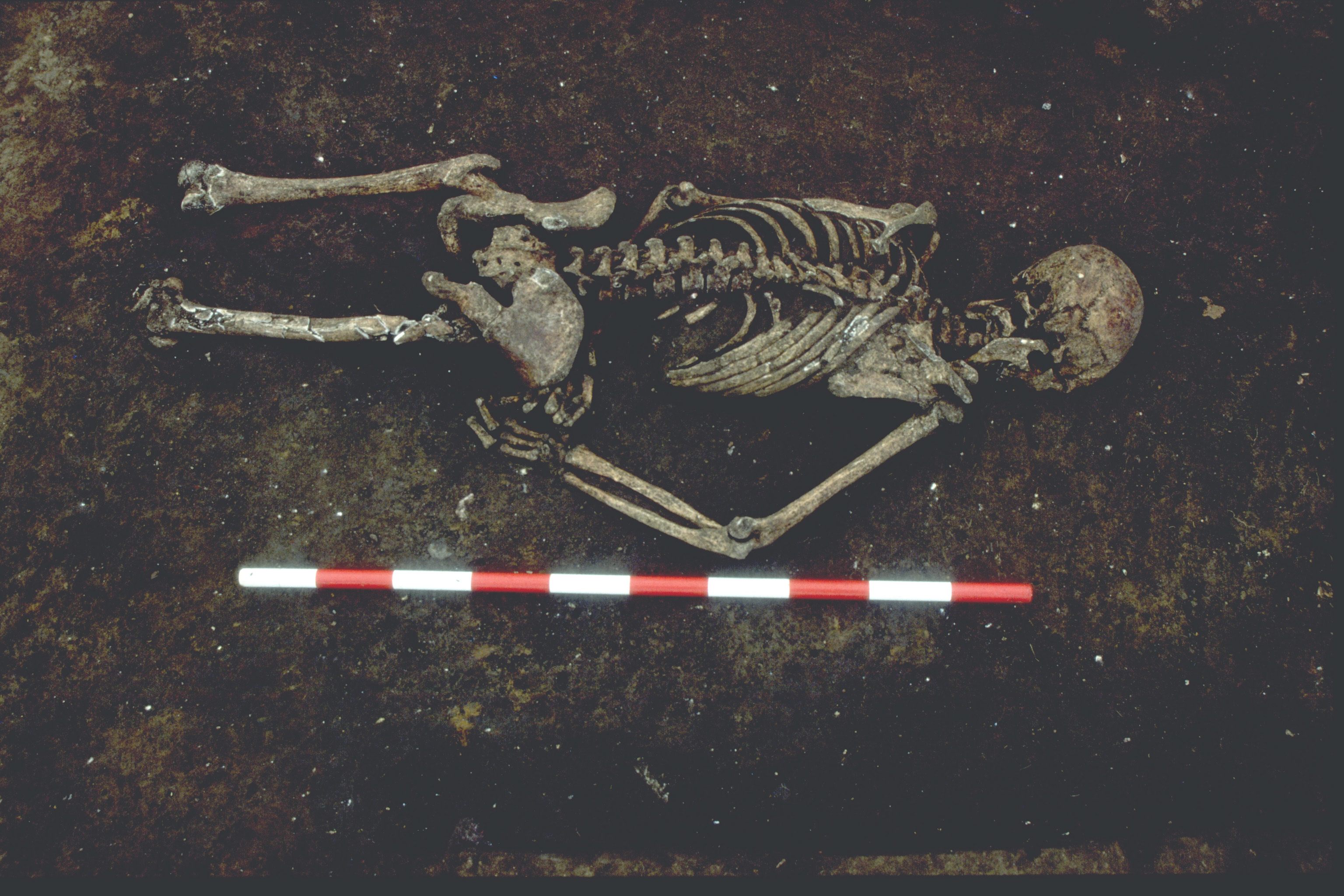Found: A Man Buried With a Stone in Place of His Tongue
It’s the only such burial ever found in Roman Britain.

In the 3rd or 4th century A.D., in a farming community near the river Nene, in what’s now Stanwick, England, a man was buried in an unusual fashion—face down, with a stone in his mouth where his tongue should be.
He was probably in his thirties and probably was considered some sort of threat to the community. When people were buried face down in Roman Britain, it often meant they were unusual in some way. But the stone replacing his tongue was even more unusual: Archaeologists have never before seen an example of this burial practice in this part of the world, at this time, The Guardian reports.

The skeleton was first excavated in 1991, from a burial ground in Northamptonshire, about a two-hour drive north of London. Only recently did a team of archaeologists have the chance to examine the skeleton systematically, though, and they discovered the stone tongue.
They believe that the man’s own tongue may have been amputated. There are other examples from Roman Britain of severed body parts being replaced by objects during burial; most commonly, says The Guardian, pots or stones have been found in the place where the person’s head should be. The team also found evidence of infection on the skeleton, consistent with an amputated tongue, which often leads to infection.
The harder question to answer is why the man’s tongue was missing. Did he perhaps bite or cut it off himself, during a seizure or because of other mental health issues? Was it cut out as punishment? What was so dangerous about him that he needed to be buried face down? All archaeologists can say for sure right now is that there was something strange enough about him that the people who lived here found it necessary to bury him in this unusual way.












Follow us on Twitter to get the latest on the world's hidden wonders.
Like us on Facebook to get the latest on the world's hidden wonders.
Follow us on Twitter Like us on Facebook